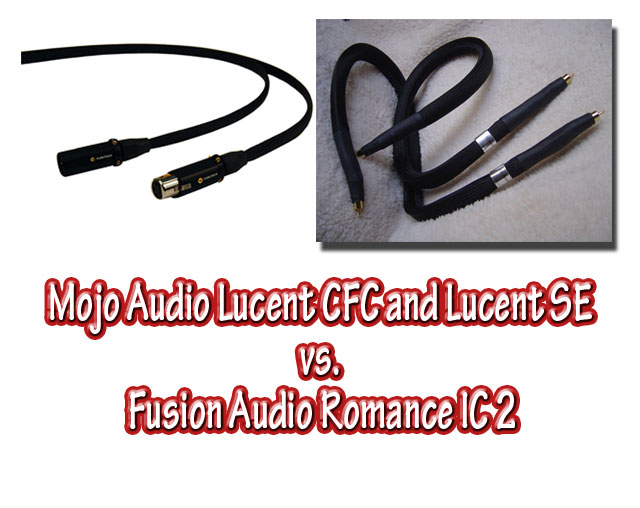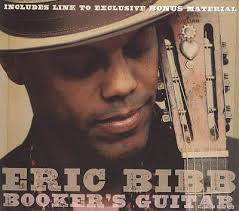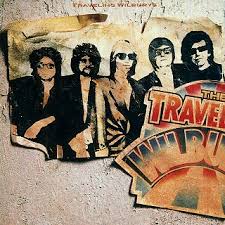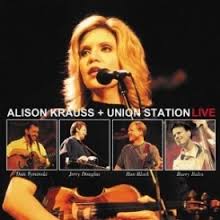Part 2: Mojo Audio Lucent CFC and Lucent SE vs. Fusion Audio Romance IC 2

The Romance 2 with the Revel Salon 2s
I recently replaced the interconnects on the Esoteric K-03 CD/SACD player in my main system with Mojo Audio’s mid-level Lucent CFC Interconnects ($700). While the Mojos are very reasonably priced cables, they unexpectedly provided a more musical and smoother overall presentation, with greater weight and texture in the midrange, than my prior reference cables. The Mojo CFCs along with the top of line Mojo Lucent SEs had been breaking in for months. The review of the Mojos was next up on my hit list, but I decided that they were sufficiently broken-in at the time of my final test of the Romance 2s to integrate that review with this one and do a head to head comparison. I was anxious to see how the Romance 2 would stand up next to the extremely musical and high performing but reasonably priced Mojo interconnects on my Esoteric, as well as how the Romance 2s would sound with my Revel Salon 2 loudspeakers.
Time to Test the Romance 2 Against the Mojo Lucent CFC
Norah Jones Feels Like Home CD was up again for round three with the Romance 2s. While I immediately detected detail not present or readily discernable with the Mojo CFC cables, what I did not detect with the Romance 2 was the slight residual coolness that I previously heard with the much more detailed Sun Union loudspeakers. Nora’s voice was extremely clear, with texture and weight. However, the overall musical presentation was not quite as liquid or warm, and the vocals were not as weighty and textured, compared to the Mojo CFCs. Nevertheless, the details in instruments were definitely clearer and subtle nuances more readily discernable. I was not quite sure which sound I preferred, the more laid back Mojos or the crystal clear and more detailed Romance 2s.
My initial impressions after a few hours of play time, but before final judgment, was that I liked the Romance 2s better with the Revels than the Sun Union loudspeakers. I also initially liked the detail and quickness of the Romance 2s better than the mid-level Mojos. I was particularly taken back by the quickness of guitar work on Track 7, Creep On In, of the Nora CD, which was noticeably faster than I previously heard using the Mojo CFC. The notes were jumping out of the loudspeakers like the instruments were in the room. But, I could not forget just how dreamy the voices were with the Mojos; smoother, with more weight and texture. A tough comparison.
 Eric Bibb’s Booker’s Guitar CD was next on the listening list and I immediately noticed a level of detail I had never heard from the Mojo interconnects. This is one of my go to CDs for critical listening and not only was there quite a bit of detail that was not as noticeable with the Mojos, but the sustain of notes seemed to be more accentuated, with notes hanging in the air more than with the Mojos. I was still also unable to detect any hint of dryness/coldness that seemed to be present when using the Romance 2s on my more detailed basement system.
Eric Bibb’s Booker’s Guitar CD was next on the listening list and I immediately noticed a level of detail I had never heard from the Mojo interconnects. This is one of my go to CDs for critical listening and not only was there quite a bit of detail that was not as noticeable with the Mojos, but the sustain of notes seemed to be more accentuated, with notes hanging in the air more than with the Mojos. I was still also unable to detect any hint of dryness/coldness that seemed to be present when using the Romance 2s on my more detailed basement system.
I decided to test the Romance 2s on three more CDs with which I am intimately familiar, the remastered version of Dire Straits Communique,Mobile Fidelity Sound Lab’s gold CD version of Frank Sinatra’s Songs for Swingin Lovers, and Ray Charles, Genius Loves Company. On all three CDs I noticed more subtle details than with the more laid back Mojos CFC, but the midrange/voices while clearer with the Romances were not as smooth and weighty. It was as if the Mojos had more romance than the Romances. Interesting. After listening to all three CDs, I switched back to the Mojo CFC and liked what I heard. There was plenty of detail for these ears, but I preferred the midrange smoothness, although admittedly missed some of the hanging notes that were more prevalent with the Romances. But, life is compromises, so the question is which you are willing to make. That will likely depend on where your preferences lie. I am a midrange guy, but kept wondering if I could give up the dynamics that were not as distinctive with the mid-level Mojos. But, the bottom line was that both of these interconnects were excellent, each with its apparent strengths.
If your system is already weighty and smooth in the mids you may prefer the added details with the Romance 2, which to my ears was not nearly as romantic as the Mojos. If your system is already on the detailed side you may enjoy the added weight and smoothness offered by the Mojos. Keep in mind that the Romance 2s lean slightly toward the romantic side of the equation, but just not as much as the Mojo CFC. While the Romance 2s also let most of the details come through, they are much more musical than some of the ultra-detailed, lean and ear fatiguing cables that I have heard recently.
Enter the Top of the Line Mojo Lucent SEs
I could not finish this review within satisfying my curiosity and testing the Romance 2s against the top of the Mojo Lucent SE, which at $1100 are closer to the price of the $1600 Romance 2s. The Mojo SEs have been my amp to preamp connection ever since they had arrived at my house and replaced the Mojo Basics, which had bested my prior very musical and far more expensive reference cables. I moved the Mojo CFCs to the preamp to amp connections to replace the SE and left the Romance 2s connected to the Esoteric CD/SACD player, so I could test them against the SE in that position.
 I started the final shootout with playing theTraveling Wilburys Vol. I CD featuring the likes of George Harrison, Bob Dylan, Tom Petty, Roy Orbison, and Jeff Lynne. I immediately noticed a nice smoothness to the overall presentation, plenty of details without being in your face. From song to song there was nice musicality, which drew me into the performances. The toes were tapping which was a very good sign. If you can’t enjoy the music then what is the point? There was nothing that particularly stood out, which may be a good thing. No edginess, no in your face details, just the music baby and I liked what I heard. By the time I got to the last song, End of the Line, I was just thinking how great it was to hear these classic performances by classic artists, and it was all so darn musically engaging and easy to listen to. No ear fatigue… just shear enjoyment. The voices were clear and smooth, and the instruments were all discernable. I was anxious to listen to another CD and then switch to the Mojo SE and listen to all the CDs again. I selected the Mobile Fidelity Sound Labs long out of print gold CD reissue of Elton John’sTumbleweed Connection, one of my favorite classic EJ performances. I have listened to this CD many times and am intimately with all the songs on it. Track 1 Ballad of a Well-known Gun begins with some guitar strumming that was musical, but not extremely articulate. I liked it even though it wasn’t the utmost in dynamics. It was just enough to these ears. I could hear the strikes and sustain of the cow bell in this song, which was also of sufficient detail without being in your face. Track 2, Come Down In Time, also begins with guitar, but it is acoustic and a much more mellow presentation. The notes were there but not quite as articulate as I have heard with other cables in my system, including the Stealth Indra prototypes, and the mellower, Stealth PGS XLs. Elton’s vocal entered with a nice overall smoothness but was not quite as weighty as I would have liked. I remembered listening to it recently when the Mojo CFCs were in the system, which clearly had more texture and weight in the midrange/vocals. Still the overall performance was extremely musical, easy to listen to, and dare I say on the “romantic” side of the equation. Like a fine bottle of fine, this mellow, smooth and engaging musical aspect continued throughout my listening to Tumbleweed. On song 5, My Father’s Gun, about 1:09 into the song, I noticed bass I didn’t remember being able to pick out so clearly with my most recent other cables (Mojo CFCs). The notes just weren’t quite as prevalent and distinguishable when I had the Mojo CFCs in the system…hmmmm. I also noticed that the articulation of the opening piano notes on track 6, Where to Now St. Peter,was a bit on the soft side, not quite as articulate as I have heard from some other interconnects. Still it was musical and thus enjoyable with the Romance 2s in the system. On Track 9, Talking Old Soldiers, the piano was sooo smooth, and Elton’s voice on this particular track had nice texture and weight, more than on prior tracks. Perhaps the piano could have been a bit more articulate. With the Revels the details seemed to recede more than on my Dragon Prince loudspeakers and the romantic side seemed to be more prevalent. While the Mojo CFCs were in my estimation more romantic than the Romance 2s and provided better overall midrange weight and texture, the Romance 2s were definitely on the euphonic side of the equation that I prefer, but will a tad more detail than the CFCs. Which you prefer is really a matter of personal taste. I liked certain aspects of both cables more than the other. I liked the slightly more detailed presentation of the Romance 2s and the weight and texture of the mids with the CFCs. But, how would the Romance 2s stand up to the Mojo top of the line SEs was the 64,000 question.
I started the final shootout with playing theTraveling Wilburys Vol. I CD featuring the likes of George Harrison, Bob Dylan, Tom Petty, Roy Orbison, and Jeff Lynne. I immediately noticed a nice smoothness to the overall presentation, plenty of details without being in your face. From song to song there was nice musicality, which drew me into the performances. The toes were tapping which was a very good sign. If you can’t enjoy the music then what is the point? There was nothing that particularly stood out, which may be a good thing. No edginess, no in your face details, just the music baby and I liked what I heard. By the time I got to the last song, End of the Line, I was just thinking how great it was to hear these classic performances by classic artists, and it was all so darn musically engaging and easy to listen to. No ear fatigue… just shear enjoyment. The voices were clear and smooth, and the instruments were all discernable. I was anxious to listen to another CD and then switch to the Mojo SE and listen to all the CDs again. I selected the Mobile Fidelity Sound Labs long out of print gold CD reissue of Elton John’sTumbleweed Connection, one of my favorite classic EJ performances. I have listened to this CD many times and am intimately with all the songs on it. Track 1 Ballad of a Well-known Gun begins with some guitar strumming that was musical, but not extremely articulate. I liked it even though it wasn’t the utmost in dynamics. It was just enough to these ears. I could hear the strikes and sustain of the cow bell in this song, which was also of sufficient detail without being in your face. Track 2, Come Down In Time, also begins with guitar, but it is acoustic and a much more mellow presentation. The notes were there but not quite as articulate as I have heard with other cables in my system, including the Stealth Indra prototypes, and the mellower, Stealth PGS XLs. Elton’s vocal entered with a nice overall smoothness but was not quite as weighty as I would have liked. I remembered listening to it recently when the Mojo CFCs were in the system, which clearly had more texture and weight in the midrange/vocals. Still the overall performance was extremely musical, easy to listen to, and dare I say on the “romantic” side of the equation. Like a fine bottle of fine, this mellow, smooth and engaging musical aspect continued throughout my listening to Tumbleweed. On song 5, My Father’s Gun, about 1:09 into the song, I noticed bass I didn’t remember being able to pick out so clearly with my most recent other cables (Mojo CFCs). The notes just weren’t quite as prevalent and distinguishable when I had the Mojo CFCs in the system…hmmmm. I also noticed that the articulation of the opening piano notes on track 6, Where to Now St. Peter,was a bit on the soft side, not quite as articulate as I have heard from some other interconnects. Still it was musical and thus enjoyable with the Romance 2s in the system. On Track 9, Talking Old Soldiers, the piano was sooo smooth, and Elton’s voice on this particular track had nice texture and weight, more than on prior tracks. Perhaps the piano could have been a bit more articulate. With the Revels the details seemed to recede more than on my Dragon Prince loudspeakers and the romantic side seemed to be more prevalent. While the Mojo CFCs were in my estimation more romantic than the Romance 2s and provided better overall midrange weight and texture, the Romance 2s were definitely on the euphonic side of the equation that I prefer, but will a tad more detail than the CFCs. Which you prefer is really a matter of personal taste. I liked certain aspects of both cables more than the other. I liked the slightly more detailed presentation of the Romance 2s and the weight and texture of the mids with the CFCs. But, how would the Romance 2s stand up to the Mojo top of the line SEs was the 64,000 question.
 Before switching to the SEs, I put on an SACD of Alison Krauss and Union Station Live. The sound was full, smooth and musical on the opening track and throughout this SACD. Disc 1 begins with Let Me Touch You for A While, which had plenty of details although not over the top and forward. When the track had more information, the Romance 2s seemed to let those details come through, such as on the instrumental track 2,Choctaw Hayride, with its detailed yet smooth guitar and banjo picking. Sweet… Track 3, The Luck One, had nice weight in the acoustic bass, and clarity on Alison’s voice, but with less weight than what I noted from my previous experience with the Mojo CFC on this same SACD. Alison’s voice was also not as smooth and warm as with the CFC. The same theme continued throughout this SACD so I decided it was time to switch to the Mojo SE.
Before switching to the SEs, I put on an SACD of Alison Krauss and Union Station Live. The sound was full, smooth and musical on the opening track and throughout this SACD. Disc 1 begins with Let Me Touch You for A While, which had plenty of details although not over the top and forward. When the track had more information, the Romance 2s seemed to let those details come through, such as on the instrumental track 2,Choctaw Hayride, with its detailed yet smooth guitar and banjo picking. Sweet… Track 3, The Luck One, had nice weight in the acoustic bass, and clarity on Alison’s voice, but with less weight than what I noted from my previous experience with the Mojo CFC on this same SACD. Alison’s voice was also not as smooth and warm as with the CFC. The same theme continued throughout this SACD so I decided it was time to switch to the Mojo SE.
Starting with Alison Krauss Live, I noted with the Mojo SE there was more weight to the voices and more overall weight and texture in the midrange, and in the bass. The details present with the Romance 2s were still there but to more degree with an overall smoother presentation. In fact, I heard more micro-details in voice inflections, and the overall presentation sounded more liquid using the SEs. It was as if the SEs embraced all the best attributes of the CFCs and the Romance 2s in one package but with improvements in smoothness and liquidity. The banjo and guitar on Choctow Hayride were more detailed yet retained an overall smooth character. This smoothness, particularly in voices, is what drew me toward favoring the SE. I also preferred the added sparkle on the top end, and added information and extension of notes. I noted these characteristics when listening to Track 3,The Lucky One, and this continued throughout the remainder of the Krauss SACD. I also noted the bass was more articulate, as was the banjo on the instrumental Track 8, Cluck Old Hen. The voices sounded better (more realistic and in the room) and deeper as I continued to play the SE, likely due to the fact they had been sitting for several days and were moved around to reinstall them.
Back tracking to the Tumbleweed Connection CD, I noticed that the bass line on song 5, My Father’s Gun, that enters at about 1:09 into the song was not quite as forward, big and rounded as it sounded with the Romance 2s, but was clear and distinguishable with the Mojo SEs and slightly tighter sounding. Similarly, opening piano notes on track 6, Where to Now St. Peter, were definitely more articulate with the attack more clearly distinguishable and not as soft sounding as the Romance 2s. The cymbals on the drums were also more distinctive. The piano on track 8 was also clearer with more attack. On Track 9, Talking Old Soldiers, the piano was still smooth but the attack of notes and sustain of notes was more noticeable, and Elton’s voice had more inflections while retaining at least as much texture and weight as with the Romance 2s.
Finally, returning to the Traveling Wilburys Vol. I CD, I immediately noticed much more detail coming through, particularly in the mids and high frequencies. Was it too much? No way! While all the details came through with the Mojo SE, it was not strident, or edgy in any way. Just a lot more extension and more information, but with a smooth and warm overall character. I liked it. Was it as euphonic as the Romance 2s, perhaps more so in terms of smoothness in the midrange, but maybe not quite as much in the highs and low end. Interestingly, just as I felt I may be unwilling to give up the added details provided by Romance 2 compared to the CFC, I felt the Mojo SE provided quite a bit more information. There was just too much information that was not coming through with the Romance 2 on these particular loudspeakers. Other more detailed loudspeakers may be another story. Plus, the voices were very natural and smooth with this last CD and all the others that I tested with the Mojo SE. At a retail price of $1,100, compared to $1600 for the Romance 2, the choice was clear to me for my system needs. I would keep the SEs just where they were.
Conclusions:
The Mojo Lucent CFC, Mojo Lucent SE and Fusion Audio Romance IC 2 were all fine interconnects, which could perform admirably in the right system. Which you may prefer is likely a function of what your system sounded like before inserting the cable, and your personal preferences. I felt the Mojo CFC were the most romantic sounding of the lot, and it was a hard call between the Romance 2 and Mojo SE, with all falling on the euphonic end of the spectrum rather than the ultra-detailed/lean side of the equation.
The Mojos exhibited an overall smooth and musical character with all recordings they were tested with. Their strength definitely lies in the midrange, where weight, texture and subtle nuances were obvious. The Mojo SE took charge in terms of dynamics and wonderful musicality from top to bottom without being forward in any way. They took the cake among the many cables I have used over the past several years, including some that were many times their price. They bested their sibling CFC, as well the Romance 2 in mining out details in a musical performance, and were definitely smoother in the midrange than the Romance 2. However, the Romance 2 had the edge in terms of robust round bass, providing a fuller foundation.Once broken in the Romance 2 provided an overall musical and engaging performance with plenty of details coming through for my ears and they definitely drew you into the musical performance. But, they sounded best with my more laid back speakers and could have a bit of a cool dry character on my more detailed speakers, particularly on bad recordings. But, if you have very linear smooth speakers like the Revel Salon 2s, the edge in bad recordings was not usually noticeable.
This was a tough review because while I really enjoyed the bass impact of the Romance 2 and their extreme musicality, but I kept going back to the Mojo SE because I could not resist their beautiful smooth midrange, coupled with better dynamics, which let all aspects of the music come through without any edge. In the end the Mojo SE were my overall favorite interconnect, and my ticket to audio nirvana, at a relatively modest price for high end audio. However, all three cables are highly recommended.
Happy Listening!


lewis dardick
Price: Mojo Audio Lucent CFC $700 meter
Mojo Audio Lucent SE $1200 meter
Fusion Audio Romance 2: $1600 meter
Fusion Audio Website:www.audiosurroundings.com
Stereo Times Masthead
Publisher/Founder
Clement Perry
Editor
Dave Thomas
Senior Editors
Frank Alles, Mike Girardi, Key Kim, Russell Lichter, Terry London, Moreno Mitchell, Paul Szabady, Bill Wells, Mike Wright, Stephen Yan, and Rob Dockery
Current Contributors
David Abramson, Tim Barrall, Dave Allison, Ron Cook, Lewis Dardick, Dan Secula, Don Shaulis, Greg Simmons, Eric Teh, Greg Voth, Richard Willie, Ed Van Winkle, and Rob Dockery
Music Reviewers:
Carlos Sanchez, John Jonczyk, John Sprung and Russell Lichter
Site Management Clement Perry
Ad Designer: Martin Perry





Be the first to comment on: Part 2: Mojo Audio Lucent CFC and Lucent SE vs. Fusion Audio Romance IC 2